If you've been struggling with anxiety, you might be surprised to learn that chiropractic adjustments could offer some relief. By aligning your spine, these adjustments can improve your nervous system's function, potentially easing muscle tension and fostering relaxation. Many people find that this holistic approach not only addresses physical symptoms but also enhances their overall emotional well-being. Curious about how this process works and what specific techniques might benefit you? There's more to uncover that could change your perspective on managing anxiety.
Understanding Anxiety
Anxiety can feel overwhelming, affecting your daily life in various ways. It might creep in during everyday tasks, making you worry about things that normally wouldn't bother you. You might find yourself second-guessing decisions, feeling restless, or experiencing physical symptoms like a racing heart or tight muscles. It's a common struggle, and understanding it's the first step toward managing it effectively.
You might notice that anxiety manifests differently for everyone. For some, it's a constant sense of dread or worry about the future. For others, it can be triggered by specific situations, such as public speaking or social interactions. You may have even experienced anxiety attacks, where intense feelings of panic arise unexpectedly. These experiences can lead to avoidance behaviors, making it harder to engage in activities you once enjoyed.
Recognizing the signs of anxiety is essential. You should pay attention to your thoughts and feelings, identifying what triggers your anxiety and how it affects your behavior. You might want to keep a journal to track these patterns, helping you understand your anxiety better.
This awareness can empower you to take action and seek solutions.
The Role of Chiropractic Care
Chiropractic care offers a holistic approach that can greatly impact your mental well-being. By focusing on the alignment of your spine and overall nervous system function, chiropractic adjustments can create a supportive environment for emotional health.
When your body is in balance, you may find that your anxiety levels decrease, and your overall mood improves.
Chiropractors assess your body's alignment and make adjustments to alleviate physical tension. This not only helps with pain relief but also promotes relaxation, which can notably reduce anxiety.
Here are some key benefits of chiropractic care in addressing anxiety:
- Reduced Muscle Tension: Chiropractic adjustments relieve tight muscles, allowing you to feel more relaxed and at ease.
- Improved Sleep Quality: A balanced spine can enhance your sleep patterns, making it easier to fall asleep and stay asleep—crucial for managing anxiety.
- Enhanced Mood: Regular adjustments can help regulate neurotransmitters, contributing to a more stable mood.
- Stress Relief: Chiropractic care encourages a reduction in stress hormones, helping you cope better with daily challenges.
How Adjustments Affect the Nervous System
Chiropractic adjustments play an essential role in regulating your nervous system.
By aligning the spine, these adjustments can help modulate your stress response, allowing you to feel more relaxed and in control.
Understanding how this process works can empower you to manage anxiety more effectively.
Nervous System Regulation
Through targeted adjustments, you can markedly influence the regulation of your nervous system. Chiropractic care helps restore proper alignment, which can enhance the communication between your brain and body. This improved communication is essential for maintaining a balanced nervous system and can lead to a range of benefits, including reduced anxiety.
When your nervous system is functioning at its best, you may experience:
- Better stress management
- Improved emotional stability
- Enhanced relaxation response
- Increased overall well-being
These adjustments can help to reduce tension in your body, allowing your nervous system to operate more efficiently. As your spine aligns, nerve pathways become clearer, leading to improved signals sent throughout your body. This can help mitigate the overactivity that often accompanies anxiety.
Regular chiropractic visits can empower you to take control of your nervous system regulation. By incorporating adjustments into your wellness routine, you're not just addressing physical alignment; you're fostering a healthier mental state as well.
Ultimately, you'll discover that chiropractic adjustments can be a significant component in your journey toward a calmer, more balanced life.
Stress Response Modulation
The stress response is a complex interplay between your body and mind, and chiropractic adjustments play a pivotal role in its modulation. When you're under stress, your body activates the sympathetic nervous system, triggering a fight-or-flight response. This reaction can lead to muscle tension, increased heart rate, and heightened anxiety. Chiropractic adjustments help restore balance by influencing your nervous system.
During an adjustment, your chiropractor targets specific vertebrae to improve spinal alignment. This realignment can alleviate pressure on nerves, allowing for better communication between your brain and body. As a result, your parasympathetic nervous system, responsible for relaxation and recovery, becomes more active. You might notice a decrease in muscle tension and an overall sense of calm following your session.
Moreover, these adjustments can enhance blood flow and reduce inflammation, which further supports your body's ability to handle stress. Regular chiropractic care can help you develop resilience against anxiety by promoting a healthier nervous system.
Research Supporting Chiropractic for Anxiety
Research shows that chiropractic adjustments can influence neurotransmitter regulation, which plays a key role in managing anxiety.
These adjustments may also activate stress reduction mechanisms in your body, helping you feel more relaxed.
Let's explore how these findings support the use of chiropractic care for anxiety relief.
Chiropractic and Neurotransmitter Regulation
Chiropractic care has emerged as a promising approach for regulating neurotransmitters linked to anxiety. By addressing spinal misalignments, chiropractors can help restore proper communication between the nervous system and the brain.
This balance is essential for maintaining emotional well-being and can greatly impact anxiety levels.
Research indicates that chiropractic adjustments may influence various neurotransmitters, including:
- Serotonin: Often called the "feel-good" neurotransmitter, it plays a key role in mood regulation.
- Dopamine: This neurotransmitter is linked to pleasure and reward, impacting motivation and emotional response.
- Norepinephrine: Involved in the body's stress response, regulating focus and attention.
- GABA: Known for its calming effect, it helps reduce anxiety and promote relaxation.
Stress Reduction Mechanisms
Often overlooked, the stress reduction mechanisms associated with chiropractic care can greatly alleviate anxiety symptoms. Through spinal adjustments, chiropractors help restore proper alignment, improving nervous system function. This realignment can lead to a reduction in physical stress responses, which often contribute to feelings of anxiety.
Chiropractic adjustments promote relaxation by stimulating the release of endorphins, the body's natural painkillers. When you experience less physical discomfort, your body's stress response diminishes. In addition, these adjustments can enhance blood circulation, allowing for better oxygenation of your tissues, which plays an essential role in reducing overall tension.
Research shows that regular chiropractic care can lower cortisol levels, the hormone associated with stress. By managing cortisol, you can feel more balanced and less overwhelmed.
Additionally, the hands-on nature of chiropractic treatment encourages a sense of connection and trust, further alleviating anxiety.
Incorporating chiropractic adjustments into your routine can serve as a powerful tool for managing stress and anxiety. By addressing both the physical and emotional aspects of your wellbeing, chiropractic care empowers you to take control of your mental health, leading to a more relaxed and centered lifestyle.
Benefits of Chiropractic Adjustments
In recent years, many people have discovered the powerful benefits of chiropractic adjustments beyond just physical relief. While you might initially seek chiropractic care for back pain or tension, these adjustments can also have a profound impact on your overall well-being, including anxiety reduction.
By aligning your spine and enhancing nervous system function, chiropractic adjustments promote a state of balance that helps you feel more at ease.
Here are some benefits you can expect from chiropractic adjustments:
- Improved Mood: Regular adjustments can boost your serotonin levels, which may contribute to a calmer and more positive outlook.
- Enhanced Sleep Quality: By reducing tension and discomfort, chiropractic adjustments can help you enjoy deeper, more restful sleep, which is vital for managing anxiety.
- Increased Energy Levels: When your body is aligned, you may experience a surge in energy, making it easier to handle daily stressors without feeling overwhelmed.
- Holistic Approach: Chiropractors often provide advice on lifestyle changes, exercise, and nutrition, empowering you to take charge of your mental and physical health.
With these benefits in mind, you might find that chiropractic care not only alleviates physical discomfort but also supports your emotional well-being.
If you're looking for a complementary approach to managing anxiety, consider incorporating chiropractic adjustments into your routine. Your mind and body will thank you!
What to Expect During a Visit
When you decide to visit a chiropractor, you can expect a thorough approach tailored to your needs. Your first appointment typically begins with a detailed consultation. The chiropractor will ask about your medical history, current symptoms, and any specific concerns you have regarding anxiety.
They'll want to understand how anxiety affects your daily life and any physical symptoms you might be experiencing.
After the consultation, the chiropractor may perform a physical examination. This could involve checking your posture, range of motion, and any areas of discomfort.
They might also assess your spine and related structures to identify any misalignments or tension that could be contributing to your anxiety.
Once they've gathered this information, the chiropractor will discuss their findings with you. They'll explain how your physical health might relate to your anxiety and outline a treatment plan designed specifically for you.
You'll have an opportunity to ask questions, ensuring you fully understand the proposed approach.
During your visit, it's common to experience a sense of calm as the chiropractor creates a comfortable environment. If you're feeling anxious, don't hesitate to communicate that—they'll work with you to make adjustments and help you relax.
Techniques Used in Chiropractic Adjustments
When you visit a chiropractor, you'll encounter several techniques designed to improve your well-being.
Spinal manipulation, soft tissue therapy, and the diversified adjustment method are just a few approaches they might use.
Each technique targets specific areas to help reduce anxiety and enhance your overall health.
Spinal Manipulation Techniques
Utilizing various spinal manipulation techniques, chiropractors aim to restore proper alignment and function to the spine, which can greatly impact overall well-being.
These techniques not only alleviate physical discomfort but can also help reduce anxiety levels. By addressing the root causes of tension and misalignment, you may experience a greater sense of relaxation and mental clarity.
Some common spinal manipulation techniques include:
- High-Velocity Low-Amplitude (HVLA) Thrusts: Quick, controlled adjustments that realign the spine.
- Activator Method: A gentle, handheld device delivers precise adjustments, ideal for those who prefer a lighter touch.
- Flexion-Distraction: This technique involves stretching the spine while applying gentle pressure, promoting decompression and relief.
- Cox Technic: A specific method for lumbar spine issues that focuses on flexion and traction to ease nerve pain.
Each technique is tailored to your individual needs, ensuring you receive the most effective care.
Soft Tissue Therapy
Soft tissue therapy plays an important role in chiropractic adjustments, focusing on the muscles, ligaments, and tendons that support the spine. By addressing these soft tissues, you can enhance the effectiveness of spinal manipulation and promote overall relaxation.
Techniques like massage, myofascial release, and trigger point therapy are often employed to alleviate tension and improve blood flow in the affected areas.
When you receive soft tissue therapy, the chiropractor targets specific problem areas, applying pressure and stretching to release knots and tightness. This not only helps reduce pain but also encourages your body to relax, which can greatly lower anxiety levels.
You may find that after a session, your muscles feel looser and your mind is clearer, making it easier to cope with daily stressors.
Incorporating soft tissue therapy into your chiropractic care can lead to more thorough results. It complements spinal adjustments by ensuring that the surrounding muscles and tissues are functioning correctly, providing you with better mobility and wellbeing.
Diversified Adjustment Method
After addressing the soft tissues surrounding the spine, it's time to explore the techniques used in chiropractic adjustments, particularly the Diversified Adjustment Method. This widely-used technique aims to restore proper alignment and function to your spine, which can positively impact your overall well-being, including reducing anxiety.
In a Diversified Adjustment, your chiropractor employs specific thrusts to manipulate the spine and joints. This method is beneficial for its precision and ability to target problematic areas.
Here's what you can expect during a session:
- Assessment: Your chiropractor will evaluate your posture and range of motion.
- Positioning: You'll be positioned comfortably, often lying face down on a specialized table.
- Adjustment: The chiropractor will use controlled, quick thrusts to realign your spine and joints.
- Follow-up: After the adjustment, you may discuss any follow-up care or exercises.
This method not only focuses on physical alignment but can also contribute to reducing anxiety by improving your body's function and enhancing your overall sense of well-being.
Regular sessions can lead to lasting benefits, both physically and mentally.
Combining Chiropractic With Other Therapies
Combining chiropractic care with other therapies can create a holistic approach to managing anxiety. When you integrate chiropractic adjustments with practices like yoga, meditation, or cognitive-behavioral therapy (CBT), you're not just addressing physical symptoms but also the emotional and mental aspects of anxiety.
Chiropractic care focuses on aligning your spine and improving overall nervous system function, which may help reduce physical tension and promote relaxation. When you add yoga or meditation to your routine, you can enhance this relaxation effect. These practices help calm your mind, reduce stress levels, and improve your overall sense of well-being.
Additionally, incorporating CBT can provide you with effective coping strategies for dealing with anxiety triggers. As your chiropractor addresses the physical symptoms, a mental health professional can guide you in changing negative thought patterns and developing healthier responses to stress.
Moreover, nutrition plays an essential role in anxiety management. Pairing chiropractic care with a balanced diet rich in omega-3 fatty acids, antioxidants, and other vital nutrients can support your mental health. A nutritionist may help you identify foods that promote brain health, further complementing your chiropractic adjustments.
Patient Testimonials and Success Stories
Many patients have experienced considerable relief from anxiety after incorporating chiropractic adjustments into their wellness routines. You might find it inspiring to hear their stories, as these testimonials highlight the positive impact chiropractic care can have on mental health.
Many individuals have reported feeling more balanced and calm after regular adjustments, which can help ease tension built up in the body and mind.
Here are a few common themes from patient experiences:
- Improved Sleep Quality: Many patients noticed that their sleep improved considerably, allowing them to wake up feeling refreshed and ready to tackle the day.
- Reduced Muscle Tension: Patients often describe a decrease in physical tension, which can lead to a more relaxed state of mind and lower anxiety levels.
- Enhanced Focus: A number of individuals have shared how chiropractic adjustments helped them concentrate better at work or school, reducing feelings of overwhelm.
- Overall Well-Being: Many report a sense of emotional stability and well-being, making it easier to navigate daily challenges without feeling anxious.
These testimonials illustrate that chiropractic adjustments can be a valuable addition to your anxiety management toolkit.
If you've been struggling with anxiety, hearing about the successes of others may encourage you to explore chiropractic care as a potential solution. You too could experience the benefits that many have found through this holistic approach to wellness.
Tips for Choosing a Chiropractor
Finding the right chiropractor can make all the difference in your journey toward reducing anxiety and improving overall wellness. Start by asking for recommendations from friends, family, or your primary care physician. Personal referrals often lead you to practitioners who've a solid reputation.
Next, consider checking online reviews and testimonials. While everyone's experience is unique, consistent positive feedback can give you a good sense of a chiropractor's effectiveness and approach. Look for someone who specializes in anxiety and related conditions, as they'll have a deeper understanding of how chiropractic care can help you.
It's also essential to verify their credentials. Make sure your potential chiropractor is licensed and holds the necessary qualifications. You can usually find this information on their clinic's website or by calling their office.
When you visit for your first consultation, pay attention to the environment and the chiropractor's communication style. You should feel comfortable asking questions and discussing your concerns. A good chiropractor will listen actively and tailor their approach to suit your specific needs.
Lastly, trust your instincts. If something feels off or you don't feel a connection, it's okay to keep looking. Finding a chiropractor who aligns with your needs and makes you feel at ease can greatly enhance your experience and overall results in managing anxiety.
Conclusion
Incorporating chiropractic adjustments into your wellness routine can be a game-changer for managing anxiety. By aligning your spine and enhancing nervous system function, you can experience a greater sense of calm and improved mood. Whether you're dealing with physical tension or emotional stress, regular chiropractic care offers a holistic approach to your well-being. With the right chiropractor by your side, you can take meaningful steps toward reducing anxiety and enhancing your overall quality of life.



